Mem's Journey to Scotland
In a final indulgence before my impending return to Australia, an Outlander themed tour was booked for myself, Annika, and a third new friend, Jodie. Ewan Sutherland picked us up for a private tour, and we were to see some of the sites used for filming the series, along with locations relevant to both the story and Scottish history.
Our journey began at Blackness Castle, a 15th century fort used for the flogging scenes, and standing in for Fort William prison. Nowadays, Blackness Castle is empty, only the walls a remnant of what used to be a free prison for the rich and famous. These people had fallen into ill favour with royalty, and although imprisoned, had freedom to move and work. Jodie and I climbed winding stairs to high levels, and poked our heads into stone caverns and crevices, built into the main rooms. The castle is built in the shape of a ship, and was used more for commercial reasons, rather than a defence stronghold. From Blackness Castle, coal was shipped to Holland, Belgium and France, in return for alcohol, a fair trade for Scots folk.
Blackness Castle stands right on the shoreline, on the Firth of Forth. From the front face, there is a wonderful view of the Bridge of Forth, a striking feature across the Firth.
Following the castle, we journeyed to Culross, where we found the remnants of Culross Abbey . The stonewalls were mostly ruins, but carved archways and a second story were visible, and came with a great view. Behind the ruins, is the modern Abbey, still in use today.
Nearby the Abbey is a palace, where the herb gardens had been used during filming as the garden in which Claire works, at Castle Leoch. Also in Culross is the Mercat Cross, which was back to its original colour, after being painted browns and greys for filming. The Mercat
Mem Davis
36 chapters
16 Apr 2020
17th & 18th October
October 18, 2016
|
Outlander adventure
In a final indulgence before my impending return to Australia, an Outlander themed tour was booked for myself, Annika, and a third new friend, Jodie. Ewan Sutherland picked us up for a private tour, and we were to see some of the sites used for filming the series, along with locations relevant to both the story and Scottish history.
Our journey began at Blackness Castle, a 15th century fort used for the flogging scenes, and standing in for Fort William prison. Nowadays, Blackness Castle is empty, only the walls a remnant of what used to be a free prison for the rich and famous. These people had fallen into ill favour with royalty, and although imprisoned, had freedom to move and work. Jodie and I climbed winding stairs to high levels, and poked our heads into stone caverns and crevices, built into the main rooms. The castle is built in the shape of a ship, and was used more for commercial reasons, rather than a defence stronghold. From Blackness Castle, coal was shipped to Holland, Belgium and France, in return for alcohol, a fair trade for Scots folk.
Blackness Castle stands right on the shoreline, on the Firth of Forth. From the front face, there is a wonderful view of the Bridge of Forth, a striking feature across the Firth.
Following the castle, we journeyed to Culross, where we found the remnants of Culross Abbey . The stonewalls were mostly ruins, but carved archways and a second story were visible, and came with a great view. Behind the ruins, is the modern Abbey, still in use today.
Nearby the Abbey is a palace, where the herb gardens had been used during filming as the garden in which Claire works, at Castle Leoch. Also in Culross is the Mercat Cross, which was back to its original colour, after being painted browns and greys for filming. The Mercat
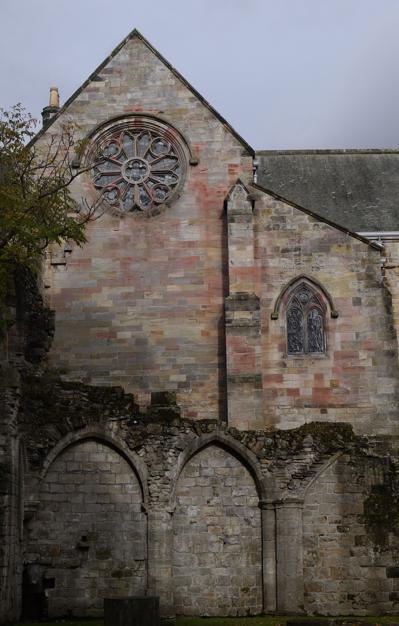


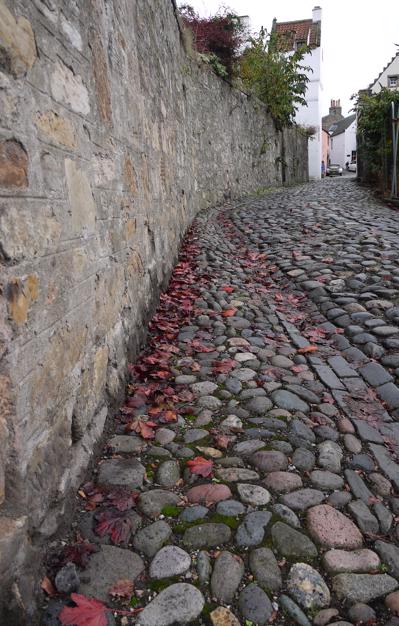


Cross was used for the scene where a young boy has his ear pinned to the post, and the makeover which would have occurred to transform the town is remarkable. It was hard to imagine a town so different, and so we have poetic license and television to thank for making it so believable.
We took a very short detour to Falkland, where Jodie hadn’t been, but Annika and I had, as documented in a previous adventure. After a brief walk around, we met Brian at Pillars of Hercules for lunch. Brian is the person who drove us to Pillars during our previous visit, and told us about Ewan and his tours. At this stage we’d been on the road quite a while, so a bowl of leek and potato soup was a welcome stop.
As we drove North, we crossed Rannoch Moor, where the low rolling hills are now covered in brown heather. We saw an original bridge and road built by the British army, post Culloden, where forces had free reign to keep the clans under control. The road and bridge couldn’t have been more than a couple of metres wide, but more harrowing was the story of the locals of Glen Quaich, where over fifteen hundred people were evicted from their land and homes. These folk were sent to Novia Scotia, their houses burned and the lairds more interested in money than the well-being of their clan. The years post Culloden have been described as an ethnic cleansing, where much of the Highland way of life was banned, and subsequently lost in time.
It was then a one hour drive to Doune Castle, where we arrived at 4:25pm. The time is important, as entry had closed at 4pm, which our guide had been unaware of. Instead, we headed North to Pitlochry, arriving around 7:30pm, where we checked into our hotel.
Here, we decided that we were unsure how we felt about the tour so far. It had been unstructured, with no knowledge of how the sites related to the story or series filming. The connections we made had been from Annika’s previous visits, and during our stops, Ewan had stayed at the car, declining to walk with us. Although very friendly, we felt we were on a hop-on-hop-off style tour, in a private car. Ewan has an incredible knowledge of Scottish history, and gave us detailed accounts of the Jacobite Uprising, and related history. The uprising is of course central to the Outlander story, and so we felt torn at receiving such useful historical information, and so little specific guidance.
In the morning, we asked Ewan if we could make the tour more Outlander specific. He became quite upset, and offered to drive us back to Edinburgh. He admitted he couldn’t tell us much about Outlander, as he hadn’t seen the series, and history was his specialty. After a few more words, we continued to tour, with our first stop being the Highland Folk Museum. It was closed.
A one hour drive to Culloden, and the mood picked up. Ewan bought our entry tickets to compensate for the “misunderstanding”, and we were thrown into a world of blood, pride and disaster.
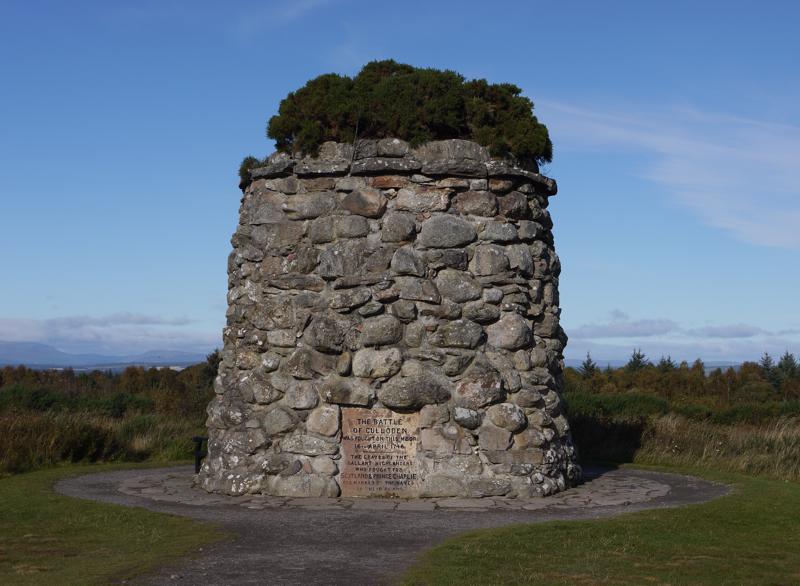
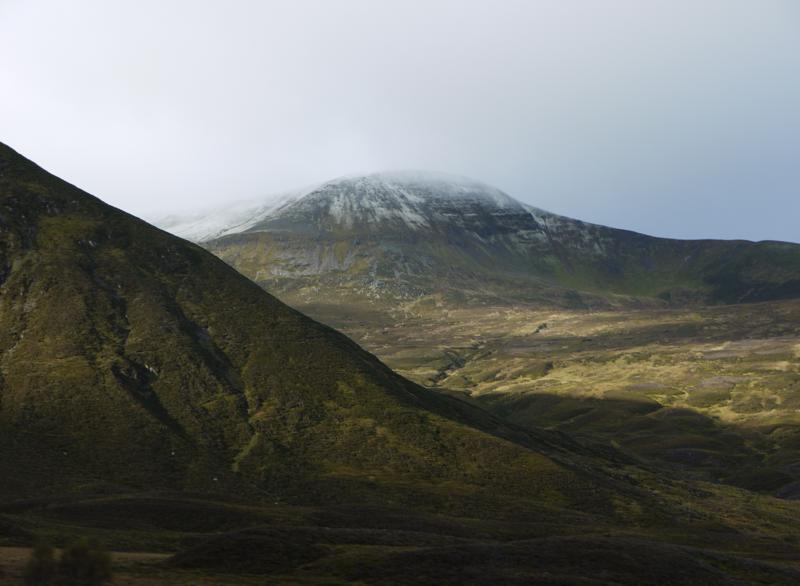
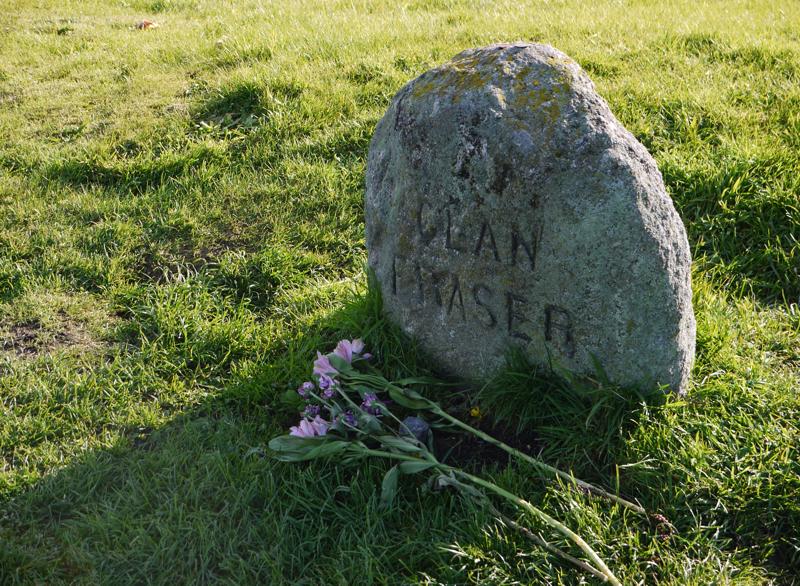
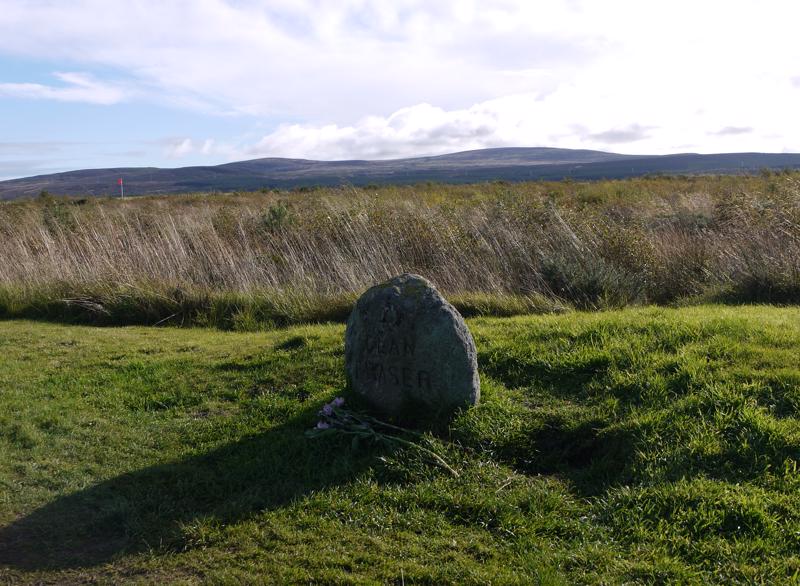
The Culloden visitor centre displays two concurrent stories. The government story lines the left walls, whilst the Jacobite story lines the right. Two perspectives given at once, meeting in the middle in a room with four screens. Inside the room, a re-enactment of the Battle of Culloden plays, while the viewer stands in the middle of the field. There is little left to the imagination, and I found myself walking out early, both Annika and myself with tears in our eyes. The centre continues with details of the aftermath. We watched a demonstration of how to wear a plaid, and ventured out onto the field itself.
The battlefield of Culloden is huge. Much bigger than I imagined. On this day, it looked like peaceful farmland. There were flags set up, to show positioning of government and Jacobite forces, and stones laid in memory of all who fell. I couldn’t help but feel overwhelmed at the significance of standing there. Here I was, camera wielding tourist, on land which changed the history and society of Scotland forever. A battle which resulted in an ethnic cleansing of Highland families, and immigration for the sake of survival. The significance of this place is huge, and you can’t help but feel affected by it, even as a visitor with no blood ties to Scotland.
From Culloden, Ewan took us to the Clava Cairns. These are three giant burial cairns, which appear as piles of white stones. Around the circumference of each is a stone circle. These stones are said to go as deep as ten feet underground, and how they were moved and raised is still a mystery, as per all standing stones in the country. The tallest stone there is the one used for filming, and although all three of us tried, none had the same result as Claire. Perhaps I’ll find Jamie some other way. The actual stone circle used in filming were fibreglass structures, placed temporarily on Rannoch Moor.
As with most places such as this, there is an air of magic and mystery

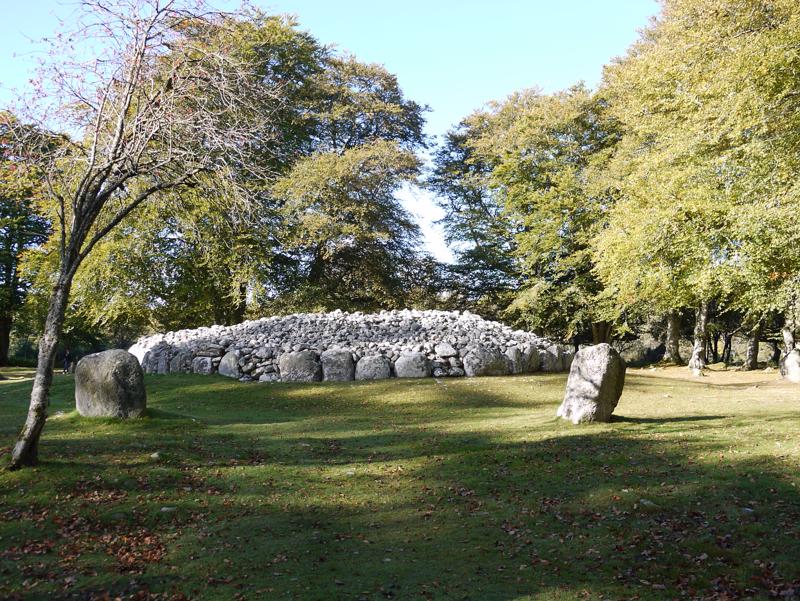

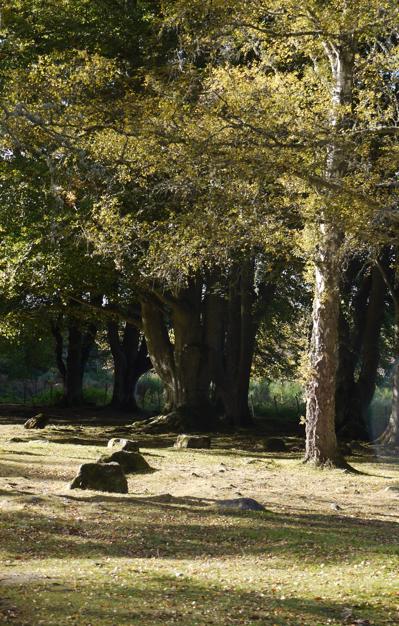
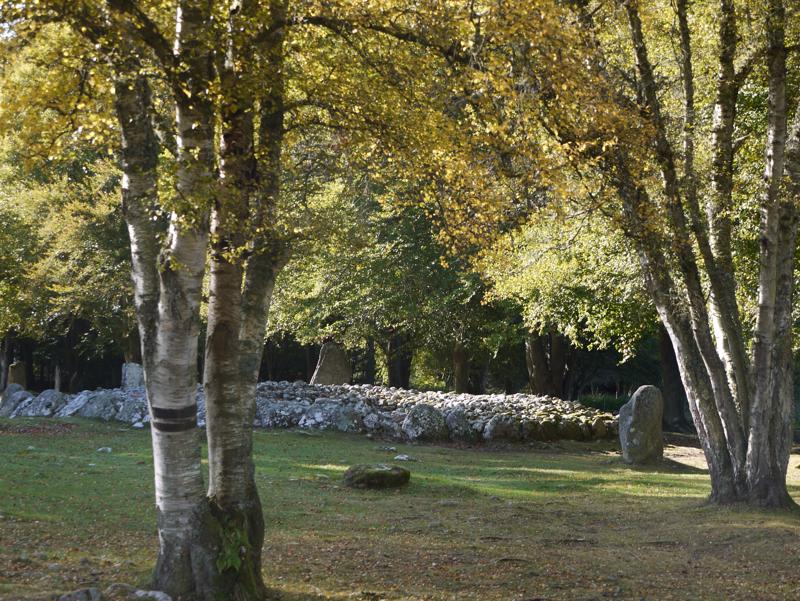
in the air. Ewan has a theory that many of these stones and cairns are built on ley lines. He brought his divining rods along for our visit, and sure enough, as we crossed the line created by the stone circle, the rods crossed over.
Ewan also suggested that the Neolithic people had a processional component to their culture. Part of his theory was based on the path built along the cairns, and (pardoning the pun) lines up with many of the other standing stone and cairn structures and their precise locations. He thinks that walking a certain route formed part of a ceremony, a rite of passage perhaps, which may have been incorporated into other, later cultures.
We’d intended to return to Doune Castle that day, on the way home, but realised we wouldn’t make it on time before closing. Instead, we returned an hour later to the Highland Folk Museum.
The museum is a series of buildings, set up as a reconstruction of life in the 1700s and 1930s. From traditional farmhouses, smokehouse, looms, tailors and clockmakers, you can get a sense of what life looked like in the Highlands. In one classroom was a costumed teacher, showing “students” how to use a deep ink well and pen. Whilst many people today would still remember using these at school, I’d never seen it, and suddenly a lot of the stories told to me made clearer sense.
During our long drives, Ewan talked with us about Scottish history. He explained the Stone of Destiny on display in Edinburgh Castle is not the original, which is said to be made of green marble from Judea, not Perthshire sandstone. Several decades ago (in pre-security days), a group of students stole the Stone from directly beneath the English throne, bringing it North for sample testing. There are rumours that when Scotland gains independence, the original stone will re-appear.
Ewan also answered a burning question I’d had about the castle ruins. As it turns out, castles weren’t a symbol of wealth or prosperity. They were practical structures, abandoned for more lavish, comfortable houses, once their purpose as a defence structure was no longer useful. The newer houses displayed wealth more effectively, and the castles were often dismantled by local people, the stones reused for building their own houses.
Ewan was a pleasant, friendly and informative guide. As far as a tour of Scotland goes, it was enjoyable. For an Outlander specific tour, I don’t believe I would recommend him. What’s done is done, and we did make the most of our experience.
Tour number three coming up next!
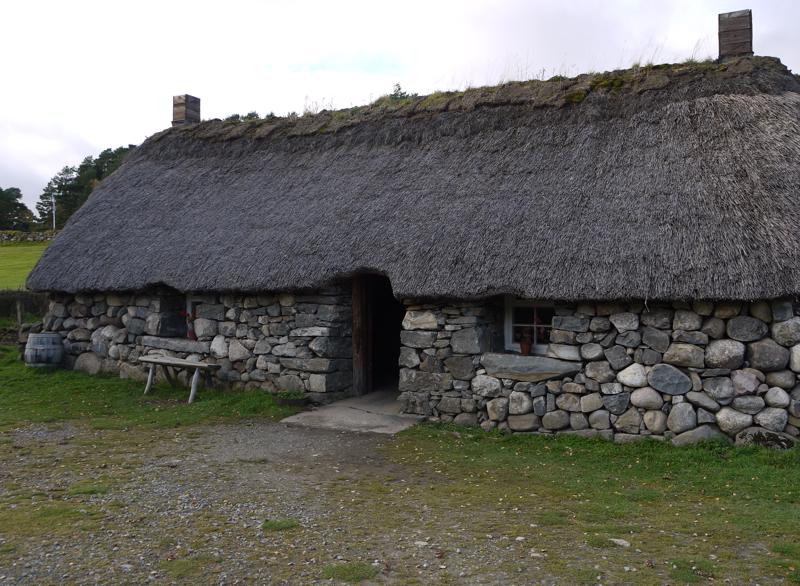
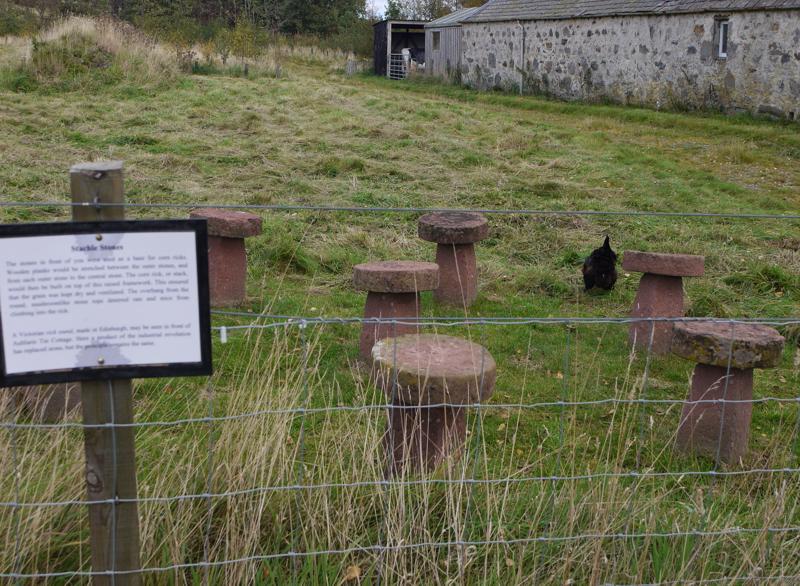
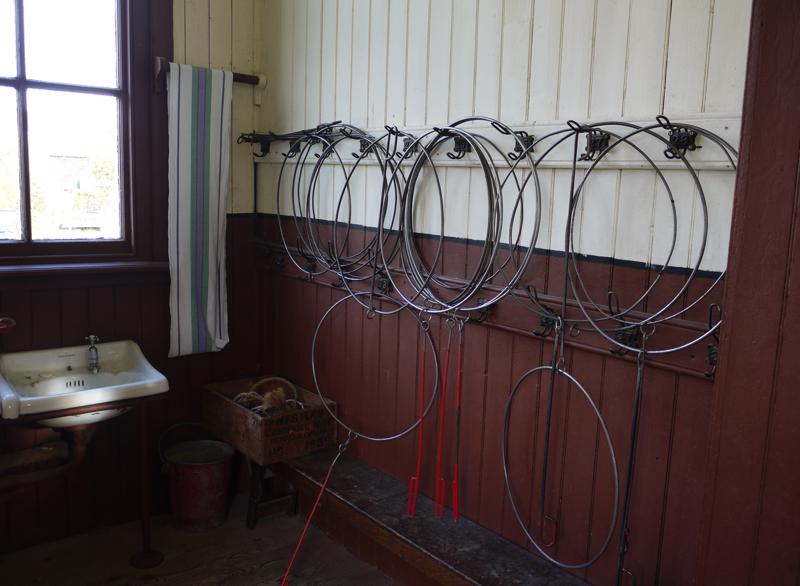
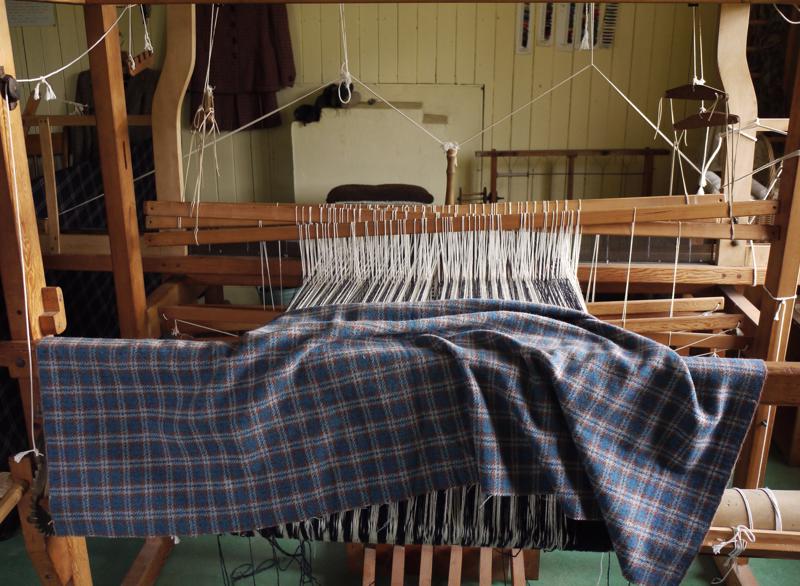
1.
The First Step
2.
The 24 hour jump
3.
12 & 13th July
4.
15th - 17th July
5.
19th & 20th July
6.
21st & 22nd July
7.
23rd - 25th July
8.
27th July
9.
29th & 30th July
10.
July 31st - August 3rd
11.
4th & 5th August
12.
6th & 7th August
13.
9th & 10th August
14.
11th - 13th August
15.
14th & 15th August
16.
16th & 17th August
17.
18th & 19th August
18.
20th & 21st August
19.
22nd & 23rd August
20.
24th & 25th August
21.
26th & 27th August
22.
28th & 29th August
23.
30th August - 21st September
24.
Part II
25.
26th - 30th September
26.
1st - 6th October
27.
7th - 12th October
28.
14th - 16th October
29.
17th & 18th October
30.
19th - 20th October
31.
21st - 24th October
32.
25th - 27th October
33.
29th - 31st October
34.
1st - 10th November
35.
11th - 16th November
36.
Homecoming
Share your travel adventures like this!
Create your own travel blog in one step
Share with friends and family to follow your journey
Easy set up, no technical knowledge needed and unlimited storage!